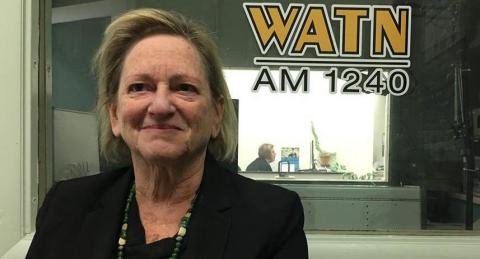I was on a roll. As the Green Party congressional candidate for District 21 in upstate New York (NY-21), I participated in five congressional candidate debates or forums between April and June 2018. The forums originally focused on the June primary with seven then six then five people competing to be the Democratic candidate in the November election. I was already on the Green Party line on the November ballot, yet organizers of the five forums invited me so audiences could hear more points of view.
The forums themselves were terrific. Questions touched on health care, poverty, jobs, student debt, addictions, veterans issues, our family farm crisis, tourism, protecting our mountains and lakes, climate change and of course bad roads, bad internet connections, our aging population and how to attract young families to rural counties. All the candidates became clearer and more responsive over the weeks, more able to present specific actions, more used to time limits and even oddball questions.
Then all of a sudden, just as the candidate forums were to be televised, I was not invited. Even when I formally requested to be included, emails informed me I would not be welcome at the events hosted in Plattsburgh by Mountain Lake Public Broadcasting Service (PBS) and in Saratoga by the Saratoga County League of Women Voters.
Once again, mainstream events put independent and third party candidates at a disadvantage and the voting public is the big loser. When broadcast media and traditional public education organizations silence the voices of alternative political candidates, our nation loses the ability to find strategies to solve our shared problems.
For the 2018 election cycle, how do we confront these biases? What do the laws calling for “equal access” for competing and comparable political candidates mean? What is the basis of any legal challenge to broadcast platforms that exclude ballot-certified candidates or to organizations that advertise events that exclude those candidates?
The Communication Act of 1934 established the Federal Communications Commission (FCC) to regulate broadcast communication in the United States. The Act included policies for fair and equal access. Although attempts to develop rules for the Fairness Doctrine were vetoed in 1987 by President Ronald Reagan, the equal access language of Section 315 remains in effect.
Section 315 says that equal opportunities must be made available to all legally qualified candidates for the same political office. These rules intended to prevent broadcast stations from manipulating elections, a worthy purpose. Originally written for radio and television, the equal access language now extends to cable systems and digital technologies.
Does Section 315 provide the basis for challenging my exclusion and demanding the comparable opportunity to present my candidacy?
As described in an email from Mountain Lake PBS, the rational for my exclusion was:
The debate we are hosting on June 12th is for the 5 candidates running in the NY 21 Democratic Primary on June 26th. With all due respect, you have already secured your place on the ballot for Election Day in November. These 5 Democrats are still competing for their Party’s nomination, to determine which of the five, like you, will have the opportunity to challenge Congresswoman Stefanik in November.
The email concluded with promises for inclusion in the fall debates, as if that made up for this missed opportunity. The League of Women Voters’ email was similar.
On many levels, I challenge the failed assumptions underneath this rationale:
- Dividing all of American politics into two corporate-funded political parties ignores the reality of the independent and 3rd party movement.
- Exclusionary and incomplete political dialogue contributes to low voter turnout.
- In the instantaneous world of 21st century, multi-platform broadcasting, voters are perfectly capable of handling discussions that include all ballot-qualified candidates from all political parties. They are not “confused” when alternative candidates are included.
- As election reform, ranked choice and open primaries progress, debates will of necessity include all ballot-certified candidates even if the sponsor sets criteria such as "filed to run," "raised money" or "has a campaign website."
- For the candidate, broadcast events that exclude some give advantages to the others, such as more time on camera answering questions, more practice with one or two-minute timeframes or different microphone and camera combinations, and more experience assessing audience reactions.
- Independent and 3rd party candidates bring decades of experience delivering real-world solutions. In a time when only 6% of Americans trust Congress to do the right thing and nearly two-thirds of eligible voters do not plan on voting in November 2018, perhaps real conversations about all possible solutions would raise some hopefulness about political leadership and re-engage potential voters.
- Independent and 3rd party candidates often speak to issues that candidates from the two corporate-funded parties cannot – poverty, climate change, institutional racism and peacebuilding. Exclusion of one or a few candidates artificially limits the conversation and the solutions.
We can no longer appeal for fairness in broadcasting; we can still demand equal access. FCC rules and Section 315 must apply to all ballot-qualified candidates in any single race, and broadcasters must be more accountable for providing equal time for competing candidates. Otherwise, their obligations to serve the entire community cannot be met and democracy is truly weakened.
